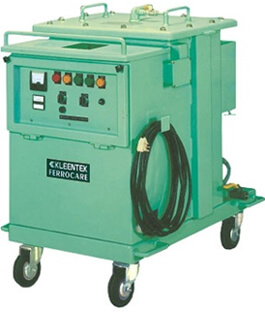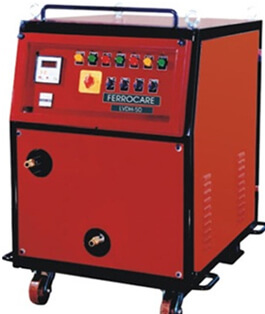Oil Contamination Management
Hydraulic systems are the Maintenance engineer’s best friends. They operate reliably for long periods and are simple to understand and operate. These systems ask only one thing from the maintenance engineer. “Clean and cool oil” Do we really provide our systems quality of oil required for sooth running throughout the life cycle of the equipment, or at the minimum between oil changes??
A walk down a typical factory floor where hydraulic machines operate, indicates the seriousness of the problem of oil leakage.
Oil leakage, however, has a more sinister meaning –
a) malfunctioning hydraulics
b) reduced productivity
c) increased energy consumption
d) increased rejection rates
Hydraulic and lubrication systems are normally protected by filters. Filters are essential devices without which a hydraulic or lubricating system cannot operate. Despite, using mechanical filters, our systems are yet not immune to contamination which is mostly in very small sizes.
The most efficient, quick, easy and inexpensive method to clean and maintain oil to a level of purity necessary to maintain hydraulic and lubrication systems in good order and eliminate the need to change oil is Electrostatic Liquid Cleaning – ELC.
The ELC system has been invented by the KLEENTEK INDUSTRIAL CO. LTD. of Japan. Kleentek have been awarded the prestigious ”Yellow Ribbon” by the Prime Minister of Japan, in 1989, for this invention.

Contaminants in oil are either positively or negatively charged due to contact potential difference with oil. When oil is passed through an electric field, positively charged particles are drawn to the negative pole and vice versa. Neutral contaminants are drawn and deposited by gradient force to the edge of the Dielectric media where intensity of the deformed electric field is the highest.
When corrugated die electric media (collectors) are inserted between electrodes, the electric field is deformed and die electric polarization occurs at the tips of the corrugation. The electric field is the strongest at the tips and particles are drawn and deposited on opposite electric poles and removed from oil.

LOW VACUUM DEHYDRATION (LVDH)
Water in oil leaves a trail of destruction corroding machine parts, reducing bearing life, leading to catastrophic breakdown.
Water depletes anti rust, anti oxidation additives in oil. It combines with gases such as ammonia and hydrogen sulphide-perpetuating the corrosion process.
A number of methods are used for removing water from oil, like centrifuging and coalescers. The most popular method to remove water is centrifuging.
Centrifuging however, cannot/does not efficiently remove water from oil, as explained in the comparative chart alongside.
PRINCIPLE
Oil is indirectly heated and fed into a vacuum chamber where it is dispersed into a thin film to vapourize water and dissolved gases at low temperatures.
The air and gases that evolve are condensed and removed from oil.
Ultimate water removal through re-circulation is zero percent water content or 50% below saturation level. Soluble gases and air are also removed to 50% of the saturation level. Indirectly heating oil at a low temperature ensures there is no burn-off, no oxidation, and no additive depletion.
Cracked low molecular weight oil, which is a by-product of the oil oxidation process, accumulates in the hydraulic or lubrication fluid.
The LVDH is the only system that can remove cracked oil, thus restoring oil to its original properties.
The LVDH unit removes water/moisture to below 50% of the saturation point in oil at low temperatures. (44-60°C) and finds application in: Hydraulic oils, Turbine oils, Compressor oils, Vacuum pumps, Compressor seal oils and dehydration before blending oil and gear oils.
